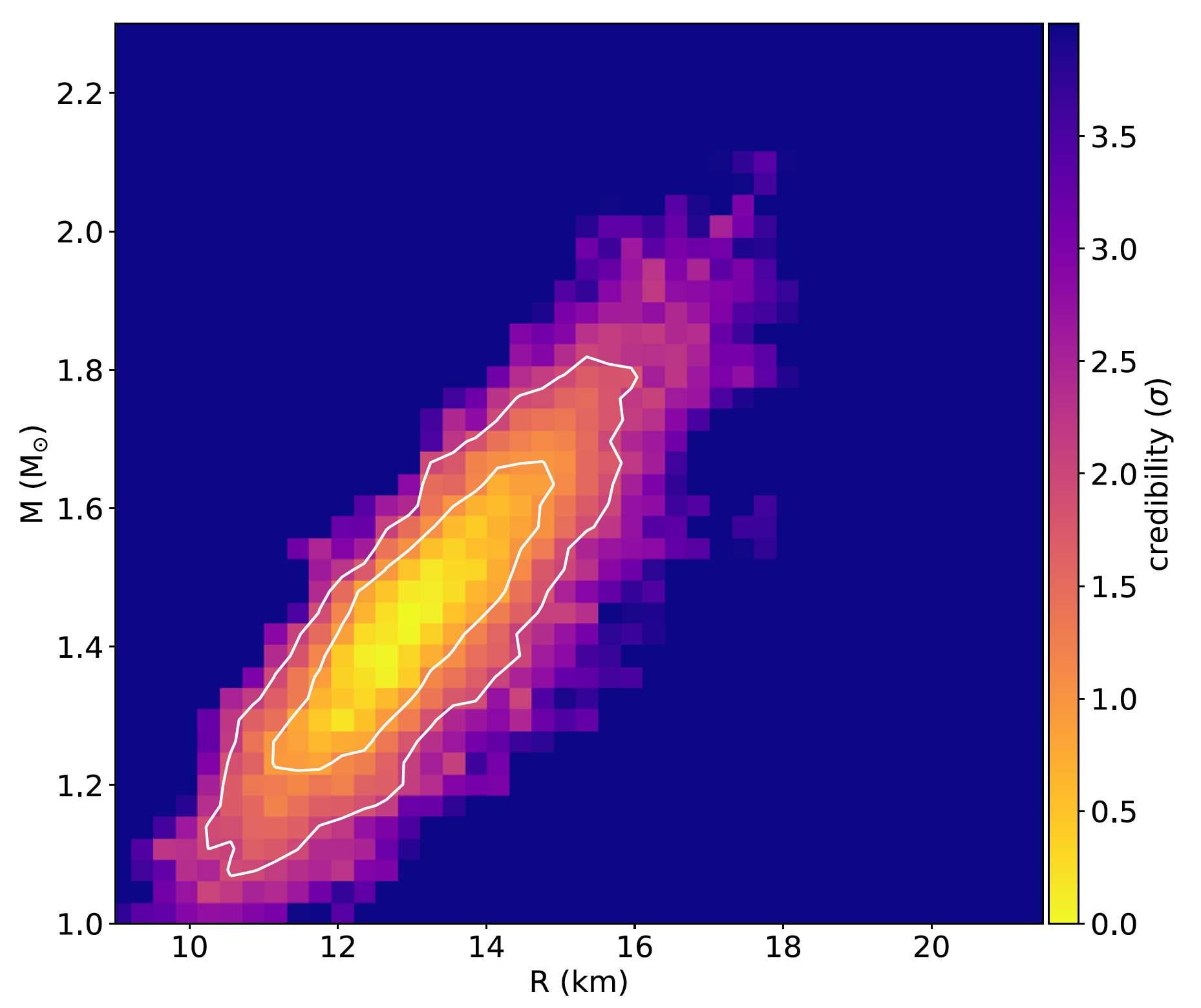NICER / ISS Science Nugget
for December 12, 2019
First NICER Key Science results released
NICER released its first set of key-science results this week, including
a media feature and associated video to highlight the simultaneous
publication of seven new peer-reviewed papers as a Focus Issue of The
Astrophysical Journal Letters. Based on nearly two years of NICER data
collection and months of supercomputer analysis for the
millisecond-period pulsar J0030+0451, the papers provide:
- the first precise (±10%, 1σ) mass and radius measurements for the same
star
- the first mass measurement for an isolated (i.e., non-binary) neutron
star
- the first map of surface "hot spot" locations, shapes, sizes, and
temperatures, a guidepost to the star's magnetic field
configuration
- and,a new constraint on the state of matter in the cores of
neutron stars, the densest matter anywhere in the universe.
Two groups within the NICER team independently analyzed a common
dataset, arriving at virtually identical conclusions about the star's
mass and radius, and revealing surprisingly that the star's magnetic
polar caps are not located opposite each other on the star's surface (as
would be expected from a simple magnetic dipole), but instead crowd
together in the same hemisphere, the one opposite our line of sight.
This effectively redraws textbook images of how pulsars work.

Figure:
Contours (68% probably inner, and 95% probability outer) for the mass
and radius of PSR J0030+0451, based on the analysis reported in Miller
et al. (ApJ Letters 887, L24), one of the independent analyses performed
by the NICER team with approximately 2 million seconds of on-target
exposure time.
<< Previous
Main Index
Next >>